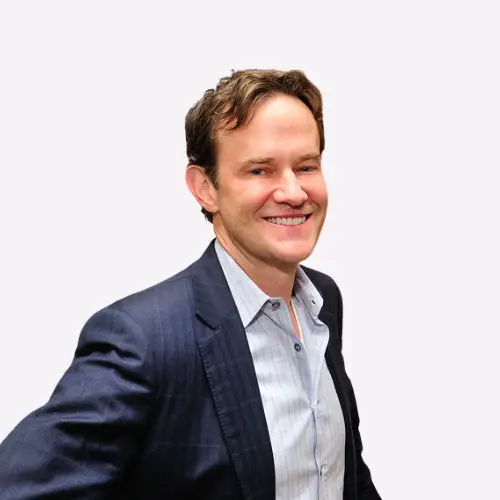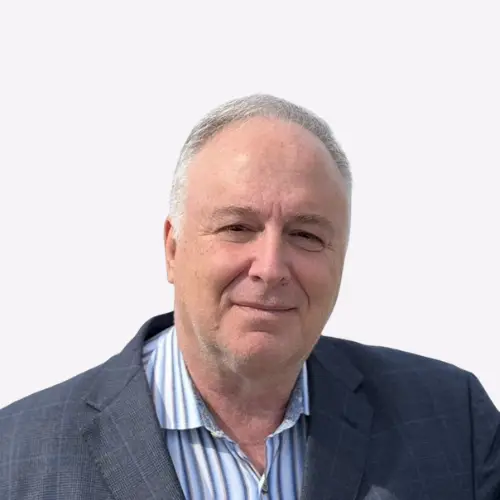Welcome to the official Program & Abstracts of the Seno-Therapeutics Summit 2025. Here you will find the complete scientific program, including detailed session descriptions and speaker abstracts. This resource is designed to help you dive deeper into the content of the summit and engage fully with the cutting-edge research, discussions and perspectives shaping the field.
The Seno-Therapeutics Summit 2025 strives to lead the way in addressing crucial challenges in cellular senescence and therapeutics. Our program showcases the latest breakthroughs in cellular senescence and therapeutic development, bringing together world-leading researchers, industry pioneers, and visionaries. Through sessions and discussions, we highlight the collective effort to unlock new strategies, accelerate translation, and shape the future of senescence-targeted medicine.

For the latest updates on all summit-related information and guidelines, we invite you to regularly visit our website and stay tuned to our official communications. Your active engagement is crucial, and we are thrilled to have you as part of our community!
Consiglio Nazionale delle Ricerche (CNR)
Piazzale Aldo Moro, 7, 00185 Roma RM, Italy

Professor
UCLA
James L. Kirkland, M.D., Ph.D. is a leading physician-scientist in the field of aging research. Formerly Professor of Medicine at Mayo Clinic, he is now Director of the Center for Advanced Gerotherapeutics at Cedars-Sinai Medical Center in Los Angeles. Dr. Kirkland is internationally recognized for pioneering the discovery of senolytic drugs—therapies that target senescent cells to improve healthspan—and for leading some of the first clinical trials translating these interventions to humans.
James L. Kirkland, M.D., Ph.D., F.R.C.P. (C)

Professor
Mayo Clinic
Marissa J. Schafer, Ph.D. is an Associate Professor of Physiology & Biomedical Engineering and Neurology at Mayo Clinic in Rochester, Minnesota. She leads the Brain and Systemic Aging Lab, which explores how cellular senescence, inflammation, and circulating factors contribute to age-related cognitive decline and how these processes might be targeted to preserve brain health. Dr. Schafer received her Ph.D. in Biomedical Engineering from Mayo Clinic and completed postdoctoral training in aging biology before establishing her independent group.
Senescent cells accumulate in the aging body and brain and influence systemic and local microenvironments through the senescence associated secretory phenotype. Our lab leverages translational biomarker discovery and high-dimensional approaches, including single-cell spatial mapping, to define systemic and brain-resident senescent cell fates, biomarkers, and mechanisms. Using Olink proteomics, we identified interleukin-23 receptor (IL-23R) as a novel senescence-linked plasma biomarker that increases with age in mice and humans, is produced by senescent cells in aged tissues, and is reduced by senolytic interventions, implicating IL-23R as an important aging- and senescence-linked biomarker. Through NIH Cellular Senescence Network Consortium research, we apply single-cell CosMx spatial molecular imaging and orthogonal approaches to map senescent and aged cell identities. We discovered white matter-localized microglia, as well as other glial subtypes, with high senescence biomarker scores across multiple molecular domains, and we are leveraging proximity-integrated ligand-receptor inference to predict senescent and aged cell signaling interactomes in distinct brain niches. Collectively, these studies reveal therapeutically responsive senescence biomarkers and spatially defined brain cell states with senescent features, which provide a framework for mechanistic insight and advancement of targeted interventions to mitigate senescence-driven decline in aging.

Professor
IOR, ETH Zurich
Andrea Alimonti, M.D. is an oncologist and molecular cancer biologist, currently serving as Director of the Institute of Oncology Research (IOR) in Bellinzona, Switzerland, where he also leads the Molecular Oncology Group. He holds full professorships at ETH Zurich, the Università della Svizzera italiana (USI), and the University of Padua. Dr. Alimonti earned his medical degree from the University of Rome “La Sapienza” and completed his clinical oncology training at the National Cancer Institute in Rome. He then conducted postdoctoral research in cancer biology at both Memorial Sloan-Kettering Cancer Center and Harvard Medical School.
His research explores pro-senescence therapies to halt tumor growth, the role of myeloid-derived suppressor cells in prostate cancer, and how gut microbiota drive therapy resistance.
Recent research underscores the dual and context-dependent role of cellular senescence in cancer, where it can either suppress or promote tumor progression. Notably, senescent tumor cells have been implicated in enhancing metastasis across multiple cancer types, including prostate cancer.
Mechanistically, I will present evidence that the tumor-promoting effects of senescent tumor cells are driven by the senescence-associated secretory phenotype (SASP) and the release of mitochondrial DNA (mtDNA) into the tumor microenvironment.
Importantly, senescence is not confined to tumor cells. Recent findings reveal that immune cells within the tumor microenvironment, particularly polymorphonuclear myeloid-derived suppressor cells (PMN-MDSCs), can also acquire a senescent-like state. These cells exhibit markedly increased immunosuppressive and tumor-supportive properties compared to their non-senescent counterparts. This senescence-driven intercellular communication represents a critical axis of immune evasion and tumor progression.
Finally, I will highlight emerging therapeutic strategies aimed at eliminating senescent cells both tumor and immune cells using senolytic agents, as well as approaches to reprogram or suppress the SASP. Both strategies show significant promise in limiting metastasis and improving anti-tumor immunity.
Affiliations
Presenting Author: Andrea Alimonti 1,2,3,4,5

Professor
Johannes Kepler University
As the audience of this meeting is well aware of, senescent cells that accumulate during aging, persist upon oncogenic activation in preneoplastic lesions, or remain in a dormancy-like state as therapy-surviving cancer cells may underlie detrimental outcomes via their pro-inflammatory and matrix-remodeling secretome as well as through their stem-like reprogramming which becomes evident upon occasional cell-cycle re-entry. Collectively, these harmful features provide a strong rationale for the selective therapeutic elimination of senescent cells.
We present here a novel class of a redox-activatable agent, dubbed SenLyt, which preferentially kills senescent cells by exploiting senescence-characteristic redox features as its activating principle. Reduced SenLyt generates H2O2 in the presence of high NADH and low glutathione levels, and kills the labile iron-enriched senescent cells by ferroptotic and apoptotic death mechanisms. When equal pro-senescent triggers were applied to senescence-incapable model systems, the cytotoxic potential of SenLyt was largely neutralized, as a molecular SenLyt derivative that cannot utilize NADH for H2O2 generation no longer killed senescent cells. Likewise, engineered catalase overexpression or iron chelation blunted senolytic activity.
SenLyt consistently removed cells in replicative, oncogene-, oncogene-inhibition-, therapy- and virus-induced senescence in preclinical cell culture and animal models with remarkable senescence selectivity (‘senolytic index’), also when compared to established senolytics. SenLyt, which was well-tolerated in all in vivo settings tested, reduced the content of senescent cells in organs of aged animals, alleviated age-related pulmonary fibrosis, partly restored physical strength of old mice when compared to a cohort of young animals, and significantly prolonged lifespan compared to mock treatment. SenLyt eliminated therapy-surviving senescent persisters and improved long-term outcome to anticancer therapy in vivo.
Moreover, tumor cells in which we restored oncogene-induced senescence by reverting the underlying escape mechanism became susceptible to SenLyt as well. Most strikingly, SenLyt delayed and reduced full-blown tumor formation in Ras- or Braf-driven mouse models by eliminating early senescent lesions, thereby establishing a novel system-wide cancer prevention strategy. In essence, SenLyt operates as a broadly active, well-tolerated and highly specific pan-senolytic based on its dual senescence-related mode of activation and killing.
Authors: Clemens A. Schmitt1–3 and colleagues
1 Charité – Universitätsmedizin Berlin, Molekulares Krebsforschungszentrum (MKFZ), Campus Virchow Klinikum, 13353 Berlin, Germany
2 Max-Delbrück-Center for Molecular Medicine in the Helmholtz Association, Robert-Rössle-Straße, 13125 Berlin, Germany
3 Kepler University Hospital, Department of Hematology and Oncology, Johannes Kepler University, Krankenhausstraße 9, 4020 Linz, Austria

Professor
UT Health San Antonio
Daohong Zhou, M.D. is the Joe R. and Terry Lozano Long Distinguished Chair of Developmental Therapeutics at the University of Texas Health Science Center at San Antonio’s Long School of Medicine. As Co-Director of the Center for Innovative Drug Discovery (CIDD) and Associate Director for Drug Development at the Mays Cancer Center, he leads groundbreaking efforts in senolytic and PROTAC-based therapeutics.
Dr. Zhou earned his M.D. from Yunyang Medical College of Tongji Medical University and his M.S. in Immunology from Henan Medical University, followed by postdoctoral training in Immunology at Johns Hopkins University (1990–1992). Before joining UT Health San Antonio in 2022, he held professorships at the University of Florida, University of Arkansas for Medical Sciences, and the Medical University of South Carolina.
Recent research underscores the dual and context-dependent role of cellular senescence in cancer, where it can either suppress or promote tumor progression. Notably, senescent tumor cells have been implicated in enhancing metastasis across multiple cancer types, including prostate cancer.
Mechanistically, I will present evidence that the tumor-promoting effects of senescent tumor cells are driven by the senescence-associated secretory phenotype (SASP) and the release of mitochondrial DNA (mtDNA) into the tumor microenvironment.
Importantly, senescence is not confined to tumor cells. Recent findings reveal that immune cells within the tumor microenvironment, particularly polymorphonuclear myeloid-derived suppressor cells (PMN-MDSCs), can also acquire a senescent-like state. These cells exhibit markedly increased immunosuppressive and tumor-supportive properties compared to their non-senescent counterparts. This senescence-driven intercellular communication represents a critical axis of immune evasion and tumor progression.
Finally, I will highlight emerging therapeutic strategies aimed at eliminating senescent cells both tumor and immune cells using senolytic agents, as well as approaches to reprogram or suppress the SASP. Both strategies show significant promise in limiting metastasis and improving anti-tumor immunity.

CEO
Rubedo Life Sciences
Frederick C. Beddingfield III is a physician-scientist and biotech entrepreneur. He is currently CEO and Board Director of Rubedo Life Sciences. He also serves as Chairman of the Board of Sagesse Bio and as a director of Cytrellis Biosystems. Previously he was an Executive Partner at Apollo Health Ventures, a longevity and age-related disease fund. He served as CEO and director of Kira Pharmaceuticals developing biologics for immunology, inflammation, and rare diseases from 2020 to 2023. He was founder, president, chief executive and member of the board of directors of Sienna Biopharmaceuticals Inc. and took the company public in 2017. Previously he served as Chief Medical Officer of Kythera Biopharmaceuticals, acquired by Allergan in 2015. Frederick worked at Allergan for 10 years (2003-2013) where he served in various roles including the Therapeutic Area Head of Dermatology and Chief Medical Officer Allergan Medical. He has led the development and approvals of global leading brands in medical dermatology, aesthetics, neurology, metabolic, and other therapeutic areas. These brands include Botox (cosmetic, hyperhidrosis, spasticity, and others), Juvederm, Voluma, Kybella, Latisse, Aczone, and Tazorac. Frederick has led four successful FDA advisory committees.
Since completing his training, Frederick has maintained a clinical and teaching practice at UCLA. He is a board-certified dermatologist and emergency medicine physician and fellowship trained in dermatologic surgery and cutaneous oncology. Frederick completed his medical degree with honors at UNC Chapel Hill, his residency and fellowship training at UCLA, and his PhD in Policy Analysis Research at RAND. He serves on the medical advisory board of the Children’s Skin Disease Foundation and Camp Wonder. He is on the board and co-founder of the Dermatology Summit and Dermatology Innovation Forum conferences, and a Board Trustee of Advancing Innovation in Dermatology, a non-profit organization.

CEO
Rubedo Life Sciences
Frederick C. Beddingfield III is a physician-scientist and biotech entrepreneur. He is currently CEO and Board Director of Rubedo Life Sciences. He also serves as Chairman of the Board of Sagesse Bio and as a director of Cytrellis Biosystems. Previously he was an Executive Partner at Apollo Health Ventures, a longevity and age-related disease fund. He served as CEO and director of Kira Pharmaceuticals developing biologics for immunology, inflammation, and rare diseases from 2020 to 2023. He was founder, president, chief executive and member of the board of directors of Sienna Biopharmaceuticals Inc. and took the company public in 2017. Previously he served as Chief Medical Officer of Kythera Biopharmaceuticals, acquired by Allergan in 2015. Frederick worked at Allergan for 10 years (2003-2013) where he served in various roles including the Therapeutic Area Head of Dermatology and Chief Medical Officer Allergan Medical. He has led the development and approvals of global leading brands in medical dermatology, aesthetics, neurology, metabolic, and other therapeutic areas. These brands include Botox (cosmetic, hyperhidrosis, spasticity, and others), Juvederm, Voluma, Kybella, Latisse, Aczone, and Tazorac. Frederick has led four successful FDA advisory committees.
Since completing his training, Frederick has maintained a clinical and teaching practice at UCLA. He is a board-certified dermatologist and emergency medicine physician and fellowship trained in dermatologic surgery and cutaneous oncology. Frederick completed his medical degree with honors at UNC Chapel Hill, his residency and fellowship training at UCLA, and his PhD in Policy Analysis Research at RAND. He serves on the medical advisory board of the Children’s Skin Disease Foundation and Camp Wonder. He is on the board and co-founder of the Dermatology Summit and Dermatology Innovation Forum conferences, and a Board Trustee of Advancing Innovation in Dermatology, a non-profit organization.

Professor
UCLA
James L. Kirkland, M.D., Ph.D. is a leading physician-scientist in the field of aging research. Formerly Professor of Medicine at Mayo Clinic, he is now Director of the Center for Advanced Gerotherapeutics at Cedars-Sinai Medical Center in Los Angeles. Dr. Kirkland is internationally recognized for pioneering the discovery of senolytic drugs—therapies that target senescent cells to improve healthspan—and for leading some of the first clinical trials translating these interventions to humans.

Professor
Mayo Clinic
Marissa J. Schafer, Ph.D. is an Associate Professor of Physiology & Biomedical Engineering and Neurology at Mayo Clinic in Rochester, Minnesota. She leads the Brain and Systemic Aging Lab, which explores how cellular senescence, inflammation, and circulating factors contribute to age-related cognitive decline and how these processes might be targeted to preserve brain health. Dr. Schafer received her Ph.D. in Biomedical Engineering from Mayo Clinic and completed postdoctoral training in aging biology before establishing her independent group.

Professor
IOR, ETH Zurich
Andrea Alimonti, M.D. is an oncologist and molecular cancer biologist, currently serving as Director of the Institute of Oncology Research (IOR) in Bellinzona, Switzerland, where he also leads the Molecular Oncology Group. He holds full professorships at ETH Zurich, the Università della Svizzera italiana (USI), and the University of Padua. Dr. Alimonti earned his medical degree from the University of Rome “La Sapienza” and completed his clinical oncology training at the National Cancer Institute in Rome. He then conducted postdoctoral research in cancer biology at both Memorial Sloan-Kettering Cancer Center and Harvard Medical School.
His research explores pro-senescence therapies to halt tumor growth, the role of myeloid-derived suppressor cells in prostate cancer, and how gut microbiota drive therapy resistance.

Professor
UT Health San Antonio
Daohong Zhou, M.D. is the Joe R. and Terry Lozano Long Distinguished Chair of Developmental Therapeutics at the University of Texas Health Science Center at San Antonio’s Long School of Medicine. As Co-Director of the Center for Innovative Drug Discovery (CIDD) and Associate Director for Drug Development at the Mays Cancer Center, he leads groundbreaking efforts in senolytic and PROTAC-based therapeutics.
Dr. Zhou earned his M.D. from Yunyang Medical College of Tongji Medical University and his M.S. in Immunology from Henan Medical University, followed by postdoctoral training in Immunology at Johns Hopkins University (1990–1992). Before joining UT Health San Antonio in 2022, he held professorships at the University of Florida, University of Arkansas for Medical Sciences, and the Medical University of South Carolina.


Chief Scientist
Unity Biotechnology
Mike Sapieha is the University of Montreal Endowed Chair in Translational Vision Research, Canada Research Chair in Retinal Cell Biology and Full Professor in the Departments of Ophthalmology and Biochemistry. He is also the founder and Chief Scientific Officer of SemaThera Inc. and served as Chief Scientist of UNITY Biotechnology in San Francisco.
His team identified mechanisms implicating deregulation of neuronal metabolism, innate immune memory, and cellular senescence in retinal vascular diseases such as diabetic retinopathy and age-related macular degeneration (AMD). This work led to the first clinically tested approaches to regenerate functional vasculature in the retina as well as clinical development of senolytics in diabetic eye disease.
He was elected to the College of the Royal Society of Canada and is a Fellow of the Canadian Academy of Health Science.
Diabetic macular edema (DME), a leading cause of diabetes-related vision loss, is characterized by breakdown of the blood-retina barrier resulting in extravasation of fluid and proteins into the retina. Current standard of care for DME, anti-vascular endothelial growth factor (VEGF) agents, effectively improve visual acuity and reduce macular edema, but the majority of effect is observed in the first 6 months of treatment and suboptimal in a significant proportion of patients. Based on preclinical rationale demonstrating elevated burden of senescent cells in diabetic retinas and their role in driving disease, we tested the effects of intravitreal (IVT) delivery of foselutoclax (hereafter UBX1325), a senolyticsmall molecule inhibitor of anti-apoptotic protein BCL-xL, in participants with DME. In a phase 1 and the BEHOLD phase 2 trial, UBX1325 led to clinically meaningful gains in visual acuity lasting up to 48 weeks in a patient population who had visual acuity deficit despite prior anti-VEGF treatment. In the ASPIRE Phase 2b trial, we enrolled 52 patients with prior anti-VEGF treatment who received 10μg UBX1325 or 2mg aflibercept IVT every 8 wks. UBX1325 achieved vision gains comparable to standard of care aflibercept and showed non-inferiority to aflibercept at wks 24 and 36. It was superior in 7 out of 9 time points in patients with lesser edema (baseline CST<400 μm representing 60% of patients enrolled in the trial). UBX1325 however did not achieve noninferiority by averaging week 20 and 24 (a prespecified primary endpoint). The overall benefits of UBX1325 in promoting long lasting improvements in retinal function compared to standard of care warrant for further investigation with a likely focus on a patient population with earlier DME.

Head, Emerging Sciences
Chiesi Pharmaceuticals
Dr. Alessandra Zatti is an experienced life sciences professional with over a decade of expertise in research and development management, scientific evaluation, and innovation scouting across academia, foundations, and the pharmaceutical industry. Currently leading the Emerging Sciences & Technology Unit at Chiesi Farmaceutici, with responsibility for identifying and scouting external opportunities, assessing new biological and technological trends, and conducting scientific and strategic evaluations through cross-functional teams in the Air&Care areas.
Previously, she served for 10 years as Scientific Officer at Fondazione Telethon, a major non-profit organization, where she designed and managed competitive funding schemes, led rigorous peer-review processes, and fostered collaborations with key opinion leaders, investors, and patient associations. She supervised large-scale research grant programs, strategic funding of leading gene therapy and genetic research institutes, and actively contributed to the valorization of scientific portfolios through external partnerships.
Recognized for combining a strong scientific background in molecular and cellular biology with strategic vision and management expertise, she specializes in bridging cutting-edge research with translational opportunities, creating value at the intersection of science and innovation.
Chiesi Group is an international biopharmaceutical company founded in Parma (Italy) in 1935 by Giacomo Chiesi. From its beginnings as a small laboratory, the company has expanded globally and established itself as a reference in the treatment of chronic respiratory diseases such as asthma, COPD, neonatal pathologies and, more recently, rare diseases.
Today, Chiesi operates directly in 31 countries and exports to more than 100 nations. With over 7,000 employees and seven research and development (R&D) centers across Europe, the Americas and Asia, the Group achieved more than €3 billion in sales in 2024, reinvesting around 24% of revenues into R&D.
Its business is structured into three main areas: AIR (respiratory diseases), RARE (rare and ultra-rare diseases) and CARE (neonatology and special care). Chiesi employs more than 1,300 people in R&D, including 757 researchers, and ranks as the leading Italian pharmaceutical company in R&D investment, as well as among the top ten in Europe.
Its R&D centers in Parma, France, the UK, Sweden, the US, Canada and China ensure a global approach to innovation. Chiesi is expanding its interest beyond traditional small molecules into biological products (antibodies, proteins) and advanced therapies (gene/cell therapies) with the goal of building an innovative pipeline enriched with cutting-edge solutions. In recent years the company strengthened its preclinical pipeline through strategic collaborations with global partners such as Moderna, Affibody and, more recently, Serna Bio; these agreements for the discovery and development of next-generation therapeutics are based on innovative technologies that enable Chiesi to explore more effective therapeutic options in alignment with its mission.
At the core of the company’s mission is the development and delivery of innovative solutions to improve people’s quality of life, combining scientific research with social and environmental responsibility. As a certified B Corp and Benefit Corporation, Chiesi redefined its values in 2020 to embed sustainability, inclusiveness and fairness at the center of its corporate culture.
The company not only develops life-saving medicines but also serves as a model for how business can care for people, the environment and the future of society.

VP, External Innovation
Eli Lilly and Company
Benjamin Yaden, Ph.D. is the VP for Global External Innovation and Partnering Initiatives for Diabetes, Obesity, and Complications therapeutic areas at Eli Lilly, a pharmaceutical company.
Eli Lilly is a medicine company turning science into healing. It all started nearly 150 years ago with a clear vision from founder Colonel Eli Lilly: “Take what you find here and make it better and better.” Harnessing the power of biotechnology, chemistry, and genetic medicine, they are advancing science to solve some of the world’s most significant health challenges.
Ben’s present role is to identify novel preclinical and clinical assets along with innovative modalities to seed the Lilly Diabetes and Complications portfolio. He works jointly with the therapeutic area R&D and their Corporate Business Development partners to help define and execute strategy for External Innovation. In addition to his primary role, Ben serves on scientific advisory boards and as a board observer in the biotech space.
He is currently focused working on diabetes, heart failure, chronic kidney disease, non-alcoholic steatosis, atherosclerotic cardiovascular disease (ASCVD), and obesity. He is also exploring and identifying investment opportunities in the areas of healthy longevity/aging that can be employed for potential therapeutics.
Ben has 20 years of drug discovery experience in a multitude of disease areas, from men’s health/urology, skeletal muscle wasting, diabetes, fibrosis to metabolism. He joined Eli Lilly in 2003 where he worked in Research and Development. In 2017, Ben became an Advisor and Senior Director, followed by Senior Advisor and Associate VP in 2021, and finally Vice President in 2023. He is the Scientific Advisor at Sonothera, a company developing genetic medicines that treat the root cause of human disease.
Ben earned his Ph.D. in Endocrinology and his Master’s Degree of Science in Molecular Endocrinology in 2003, both at Purdue University. He also earned his Bachelor’s Degree of Science in Biology from Purdue. Ben has a broad background in molecular endocrinology and regeneration, with specific training and expertise in inter-organ communication during pathogenic states.
During his time at Lilly, he has either led or co-developed a myriad of targets including enzymes, nuclear hormone receptors, proteins/biotherapeutics, neutralizing antibodies, and peptides.
Ben serves as an Adjunct Professor in the Biology Department at Purdue University (Indianapolis) where he continues to investigate and collaborate with world leaders in hepatology to delineate TGFβ superfamily mechanisms around chronic liver/skeletal muscle injury and fibrosis.

Head, Emerging Sciences
Chiesi Pharmaceuticals
Dr. Alessandra Zatti is an experienced life sciences professional with over a decade of expertise in research and development management, scientific evaluation, and innovation scouting across academia, foundations, and the pharmaceutical industry. Currently leading the Emerging Sciences & Technology Unit at Chiesi Farmaceutici, with responsibility for identifying and scouting external opportunities, assessing new biological and technological trends, and conducting scientific and strategic evaluations through cross-functional teams in the Air&Care areas.
Previously, she served for 10 years as Scientific Officer at Fondazione Telethon, a major non-profit organization, where she designed and managed competitive funding schemes, led rigorous peer-review processes, and fostered collaborations with key opinion leaders, investors, and patient associations. She supervised large-scale research grant programs, strategic funding of leading gene therapy and genetic research institutes, and actively contributed to the valorization of scientific portfolios through external partnerships.
Recognized for combining a strong scientific background in molecular and cellular biology with strategic vision and management expertise, she specializes in bridging cutting-edge research with translational opportunities, creating value at the intersection of science and innovation.

Managing Director
Otsuka Pharmaceutical Italy
Alessandro Lattuada is a pharmaceutical executive with over 25 years of experience in multinational companies (Boehringer Ingelheim, Almirall, Shire, and Takeda), currently serving as Managing Director of Otsuka Pharmaceutical Italy. His expertise spans rare diseases, immunology, CNS, respiratory, and specialty care. He holds a Pharmacy degree and an MBA with a specialization in finance from the University of Turin.
In addition to his corporate leadership, Alessandro has been actively involved in the Italian pharmaceutical ecosystem as a member of Farmindustria’s Ethical Code Supervisory Committee and the strategic group “Digital & Connect Care,” promoting innovation and digital health initiatives in Italy.
He is also a business angel and member of Italian Angels for Biotech (IAB) and Italian Angels for Growth (IAG). He has championed investments in cutting-edge biotech ventures.


Head of Research & Innovation
OneSkin
Jia Xie is the Head of Research and Innovation at OneSkin, a biotechnology company developing longevity-focused topical products that promote biologically younger and healthier skin. Since joining OneSkin, she has led the company’s scientific strategy and research activities, overseeing the launch of multiple products powered by OS-01, a proprietary peptide shown in peer-reviewed studies to target the accumulation of senescent cells in the skin. By addressing this key hallmark of aging, OneSkin’s products are designed to extend skin healthspan and resilience.
Before OneSkin, Jia was a Principal Scientist at a biotech startup, where she directed several early-stage small molecule drug development programs across oncology indications. She also conducted research at St. Jude Children’s Research Hospital, where her work on DNA damage repair inhibitors contributed to novel therapeutic approaches for pediatric cancers. Earlier in her career, Jia completed her postdoctoral training at Northwestern University, investigating the role of cellular senescence in uterine fibroid tumorigenesis and treatment, and earned her Ph.D. from the University of Illinois at Chicago, where she focused on therapeutic strategies for ovarian cancer.
Jia brings a unique background in oncology and aging biology to the field of skin longevity, with a proven track record of translating cutting-edge science into impactful products.
Hair loss is a prevalent condition associated with aging, stress, and other intrinsic and extrinsic factors, with growing evidence implicating cellular senescence as a critical driver of follicular miniaturization and progressive hair thinning. Current clinically approved treatments, such as minoxidil and finasteride, are constrained by variable efficacy and adverse effects and were not designed to specifically target senescent cells. To address these limitations, we evaluated OS-01 HAIR, a novel topical formulation developed to target senescent cells within hair follicles and promote hair growth.
Preclinical studies demonstrated that OS-01 peptide significantly reduced CDKN1A expression in outer root sheath cells (ORSCs) treated with corticotropin-releasing hormone (CRH), a stress-associated factor. Additional actives, including a ginseng and biotin mix, decreased IL-6 and MMP1 expression in vitro. The complete OS-01 HAIR formulation also reduced senescence markers in ORSCs. Building on this rationale, an independent, double-blind, third-party clinical trial was conducted in which 32 participants received OS-01 HAIR and 25 participants received minoxidil, applied twice daily with dermarolling for six months. A comprehensive panel of hair growth and density metrics was assessed at baseline, 3 months, and 6 months using HairMetrix®, trichoscopy, and phototrichogram.
OS-01 HAIR demonstrated superior efficacy to minoxidil across multiple parameters. Hair count/cm2, follicular units/cm2, cumulative hair width/cm2, and anagen hairs/cm2 significantly increased, while interfollicular distance decreased. In a separate microbiome study of 30 participants, six months of OS-01 HAIR use improved bacterial taxa associated with follicle formation, reduced fungal species enriched in hairless patches, and decreased the Malassezia restricta/M. globosa ratio, consistent with a healthier scalp environment and reduced dandruff.
By targeting cellular senescence, OS-01 HAIR improved hair density, follicular health, and anagen hair numbers while supporting a balanced scalp microbiome. These findings highlight senescence-targeting formulations as a promising strategy for promoting scalp health.
Authors: Lear Brace1, Nathaniel Harder1, Ana Lopez2,3, Caroline Jensen3,4, Belen Campos2,3, Fiona Li1, Carolina Reis de Oliveira1, Jia Xie1, Alessandra Zonari1
1 OneSkin Technologies, California, USA
2 University of Copenhagen, Denmark
3 Innovation Centre Denmark, California, USA
4 Aarhus University, Denmark

CSO & Co-Founder
Oisin Biotechnologies
Dr. John Lewis is CSO of Oisin Biotechnologies and Professor of Oncology at the University of Alberta. At Oisin, he leads development of novel therapies based on the FAST-PLV gene therapy platform to address the key drivers of age-related disease. An internationally recognized researcher in cancer biology and genetic medicine, Dr. Lewis has authored over 100 peer-reviewed publications and translated discoveries into multiple biotechnology ventures. His work bridges basic science and therapeutic innovation, advancing new strategies to improve healthspan and lifespan.
Approaches to eliminate senescent cells in vivo have demonstrated significant improvements in lifespan and healthspan. At Oisin Biotechnologies, we have developed a clinically viable senolytic gene therapy using inducible caspase 9 (iCasp9) under the control of the p53 or p16Ink4a promoters, enabling selective clearance of different populations of senescent cells. Systemic delivery via the FAST-PLV platform in aged mice significantly reduced senescent cell burden, extended post-treatment survival by 123%, decreased frailty and improved physical and cardiac function. Furthermore, we observed a threefold reduction in tumor incidence. RNA-seq analysis revealed broad transcriptional changes in the treated animals consistent with reduced senescence and inflammation. Across 12 tissues, key stress-related genes (Jun, Fos, EGR1, GDF15) were downregulated, indicating FAST-PLV treatment resulted in dampened p53 signaling and systemic anti-inflammatory effects. These results demonstrate a clinically viable, transcriptionally targeted senolytic gene therapy with systemic impact on aging and age-related disease.
Affiliations:
Oisin Biotechnologies, 701 Fifth Ave, Suite 4200, Seattle, Washington, US, 98104
Department of Oncology, University of Alberta, Edmonton, Alberta, Canada, T6G 2E1

Founder & CEO
Phoenix SENOLYTIX
Kevin Slawin, M.D. is the Founder and CEO of Eos SENOLYTIX, a longevity company whose lead programs, powered by their proprietary MitoXcel™ Technology, target aging mitochondria to improve healthspan and potentially increase lifespan via two novel mechanisms. He is also the Founder and CEO of Phoenix SENOLYTIX, a longevity company developing novel gene therapies targeting senescent cells, among other fundamental mechanisms of aging.
He was the co-founder of Bellicum Pharmaceuticals, Inc., the first CAR T cell company, leading Bellicum to a successful $161 million IPO in December 2014. He is also Founder, Chairman, and CEO of PrintBio, Inc., the only clinical- and commercial-stage regenerative medicine company that has implanted 3D-bioprinted living implants in patients.
He currently lives in Miami, FL, where he is Founder and CEO of Miami Medicos, a membership organization of physicians, founders, executives, and investors catalyzing the healthcare entrepreneurial ecosystem in Miami and worldwide.
Authors: Keshav Karki, Ph.D., Daniel Jasinski, Ph.D., Meena Balakrishnan, Kyra Courtney, Kevin Slawin, MD. and David Spencer, Ph.D.
In a series of landmark studies, Baker et al. in 2011 initially, and then again in 2016, demonstrated proof-of-concept that in a genetic mouse model built using technology related to Bellicum’s CaspaCIDeTM iCasp9 “suicide” switch, periodic and regular removal of senescent cells (“SnCs”) by apoptosis leads to a reversal of the aging phenotype. The genetic mouse model, named p16Ink4a-ATTAC, was designed to induce apoptosis in p16Ink4a-expressing SnCs of these genetically modified mice by injection of a dimerizer drug “trigger,” AP20187, which induced crosslinking and subsequent activation of a caspase genetically fused to the drug-binding domain, FKBP12-V36.
They showed that compared to vehicle alone, AP20187 treatment extended median lifespan in both male and female mice of two distinct genetic backgrounds. The clearance of p16Ink4a-positive cells delayed tumorigenesis and attenuated age-related deterioration of several organs, including kidney, heart and fat, without apparent side effects. They demonstrated that p16Ink4a-positive cells that accumulate during adulthood negatively influence lifespan and promote age-dependent changes in several organs and suggested that their therapeutic removal may be an attractive approach to extend healthy lifespan. Other investigators soon followed with similar studies using the p16Ink4a-ATTAC Mouse Model to show reduction in age-related bone loss (Farr et al.), reduction in obesity-related metabolic dysfunction (Palmer et al.), and reduction in age-related brain inflammation and cognitive impairment (Ogrodnik et al.) with dimerizer-induced elimination of SnCs.
We have developed a novel, proprietary gene therapy vector, ApoptiCIDe-CE-GERO-002TM, carrying the iCasp9 “suicide” switch, that targets SnCs via a proprietary p16Ink4a-specific promoter, leading to their elimination following administration of the ApoptiCIDe enhanced proprietary dimerizer “trigger” molecule, PTC-1202. Over ~60% to 70% of splenic SnCs are eliminated compared to negative controls in naturally aged 75-week-old mice. Accordingly, Lamin B1 expression increases significantly in a dimer-dependent fashion.
Phoenix SENOLYTIX is developing gene therapy technologies to more specifically and efficiently target senescent cells for elimination utilizing an improved, proprietary version of CaspaCIDeTM, named ApoptiCIDeTM, an improved version of the technology originally used in the p16Ink4a-ATTAC Mouse Model. Pre-clinical PoC validation of this approach provides a solid rationale for future clinical trials in patients.
References / Links:

Founder & CEO
Eos SENOLYTIX
Kevin Slawin, M.D. is the Founder and CEO of Eos SENOLYTIX, a longevity company whose lead programs, powered by their proprietary MitoXcel™ Technology, target aging mitochondria to improve healthspan and potentially increase lifespan via two novel mechanisms. He is also the Founder and CEO of Phoenix SENOLYTIX, a longevity company developing novel gene therapies targeting senescent cells, among other fundamental mechanisms of aging.
He was the co-founder of Bellicum Pharmaceuticals, Inc., the first CAR T cell company, leading Bellicum to a successful $161 million IPO in December 2014. He is also Founder, Chairman, and CEO of PrintBio, Inc., the only clinical- and commercial-stage regenerative medicine company that has implanted 3D-bioprinted living implants in patients.
He currently lives in Miami, FL, where he is Founder and CEO of Miami Medicos, a membership organization of physicians, founders, executives, and investors catalyzing the healthcare entrepreneurial ecosystem in Miami and worldwide.
Authors: Daniel Jasinski, Ph.D., Meena Balakrishnan, Kyra Courtney, Samantha Moreno, Stephen Shaw, Stacey Allen, PhD, Danielle Grabert, Ashley Perry and Kevin Slawin, MD.
MitoXcelTM Technology – powered geropeptides have the remarkable ability to rejuvenate naturally aged mice via two separate mechanisms, both via targeting the lower Mitochondrial Membrane Potential (MMP, ΔΨm) that develops in aging cells, to dramatically eliminate senescent cells throughout the body, and to enhance the efficiency of mitochondrial function in aging cells. In naturally aged 75-week-old mice, senescent cell burden was reduced by treatment with MitoXcelTM geropeptide PTC-2105 in iWAT by 67.8% (P<0.0001), 53.8% (P<0.0001), and 52.5% (P = 0.0993) as analyzed by uPAR, p16, and SA-β-gal histological staining, respectively, relative to saline-treated control mice. This resulted in body composition reshaping towards a higher lean muscle to fat ratio, as indicated by a DEXA-measured increase in muscle mass and reduction in body fat percentage, and led to improved endurance, balance, strength, and overall exercise capability as measured by Rotarod, motorized treadmill, and grip strength testing. After 20 weeks of treatment with MitoXcelTM geropeptide PTC-2107, we demonstrated an overall 11% weight loss, remarkably comprised of a 34% fat mass loss and a 23% lean mass GAIN, without directly targeting either fat or muscle, compared to saline-treated controls in naturally aged 75-week-old mice.
Furthermore, MitoXcelTM Technology-powered oncopeptide PTC-2110 significantly improved overall survival in an aggressive B cell Acute Lymphoblastic Leukemia (“B-ALL”) in vivo TOM-1 tumor model, harboring both a wild type ABL1 and JAK2 V617F mutation, that, similarly to SnCs, exhibit a lower Mitochondrial Membrane Potential (MMP, ΔΨm) compared to normal cells (log rank – saline vs PTC-2110 = 0.0034). In animals alive on Day 31, at End of Study, animals treated with PTC-2110 exhibited almost complete control of tumor cells, equivalent to ponatinib-treated mice, as evidenced by flow cytometry of lung and spleen, despite the significantly lower exposure to drug treatment (24 vs 5 total doses per animal per group or almost 5X greater in the ponatinib-treated group) and the absence of any ABL1-targeted TKI therapy in PTC-2110-treated animals. These results open the door for a potential safe and effective new class of cancer therapeutics and highlight the potential of MitoXcelTM Technology in mitigating age-related decline and improving overall healthspan, the hallmark features of a gerotherapeutic. Eos SENOLYTIX is performing IND-enabling studies of this technology with the goal of beginning human clinical trials in 2026.
References / Links:



Vitalist
VitaDAO
Paolo Binetti is one of the top contributors of VitaDAO, a web3 organization funding longevity drug discovery, and a project director for Avinasi Labs, a web3 organization leveraging AI for longevity. He is also an advisor for LongGame, a longevity biotech VC, a venture fellow for Healthspan Capital, another longevity biotech VC, as well as a biotech expert for Capital Cell. Previously he held positions in strategy, business development, portfolio management, and program management, in industry and government. He also volunteered with Prof. de Magalhaes lab at the University of Liverpool and with Prof Ewald lab at ETH, on bioinformatics and machine learning.
Born and raised in Milano, Paolo has lived in Italy, Switzerland, the United States, and France. Paolo holds a PhD in controls, robotics and bioengineering from the University of Pisa, a MS in aerospace engineering from Politecnico di Milano, a specialization in bioinformatics from the University of California San Diego, a certificate in drug discovery and development from Harvard Medical School, and a certificate in venture finance from the University of Oxford.

CBO
Minicircle
Kalon’s work centers on innovation in biotechnology’s core infrastructure: its financing, business models, and regulatory strategy. At Minicircle, he executes this vision as Chief Business Officer, leading commercial and corporate strategy for their next-generation gene therapy platform.
Kalon has 7 years of experience across VC and M&A, working on deals totaling over $400 million in value. Kalon is also a builder in the longevity space, having published 2 peer-reviewed articles on public policy reforms to accelerate geroscience and serves as a founding board member of the Phaedon Institute. He holds a philosophy degree and a juris doctorate degree from Stanford Law School.

CEO & Co-Founder
Deciduous Therapeutics
Robin Mansukhani is CEO and Co-Founder of Deciduous Therapeutics. Previously, he co-founded and served as President & CEO of Alzeca Biosciences, an Alzheimer’s/CNS diagnostic imaging company which was supported by venture investors and the NIH. He has been an invited speaker both domestically and abroad, including TEDx. Previously Robin has worked in early stage venture capital at The Maple Fund and investment banking at Axiom Capital.
In the community, he co-founded BlueStamp Engineering, an intensive, project-based engineering program for high school students in NYC, San Francisco, and Palo Alto. He has also served a term in AmeriCorps. Mr. Mansukhani holds a B.S. in Biochemistry from Case Western Reserve University. He lives in San Francisco with his wife, three daughters, and indefatigable dog. He enjoys cooking and exercise, sometimes in that order.

